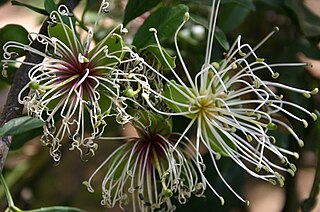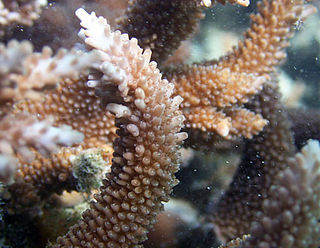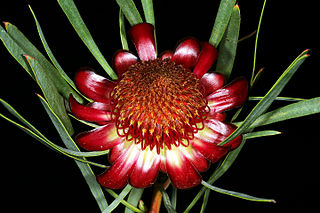
The sharp-tailed sandpiper is a small wader.
Gustavia acuminata is a species of woody plant in the family Lecythidaceae. It is found in Brazil and Venezuela. It is threatened by habitat loss.
Jardinella acuminata is a species of small freshwater snails, aquatic gastropod mollusks in the family Tateidae.

Kirkia is a genus of plant in family Kirkiaceae. It was previously placed in family Simaroubaceae, but was transferred into Kirkiaceae, together with Pleiokirkia, because these genera produce neither quassinoids nor limonoids.

Maerua is a genus of plants in the family Capparaceae, with its centre of diversity in Africa, though some species extend their range as far north as the Levant, and as far east as the Indian subcontinent and mainland Southeast Asia. Among its species:
Maerua andradae is a species of plant in the Capparaceae family. It is endemic to Mozambique.
Maerua brunnescens is a species of plant in the Capparaceae family. It is endemic to Mozambique.
Maerua elegans is a species of plant in the Capparaceae family. It is endemic to the Democratic Republic of the Congo. It is threatened by habitat loss.
Maerua scandens is a species of plant in the Capparaceae family. It is endemic to Mozambique.
Otoba acuminata is a species of plant in the family Myristicaceae found in Costa Rica, Ecuador, and Panama. It is threatened by habitat loss.
Semecarpus acuminata is a species of plant in the family Anacardiaceae. It is endemic to Sri Lanka.

Terminalia acuminata is a tree species in the Combretaceae family. It was endemic to the Atlantic Forest in Brazil. The species was believed to be extinct in the wild from habitat loss, entering the IUCN Red List in 1998, with two individuals remaining in the Rio de Janeiro Botanical Garden.
Trichilia acuminata is a species of plant in the family Meliaceae. It is found in Colombia and Panama.

Forestiera acuminata, commonly known as eastern swamp privet, is a deciduous shrub or small tree that is native to the southeastern and central United States, growing primarily in or near wetlands. It is especially common along the Mississippi Valley as far north as Illinois and Indiana, but found also across the South from eastern Texas to South Carolina.
Maerua crassifolia is a species of plant in the Capparaceae family. It is native to Africa, tropical Arabia, and Israel, but is disappearing from Egypt. Foliage from this plant is used as fodder for animals, especially camels, during the dry season in parts of Africa.
Garcinia terpnophylla is a species of flowering plant in the Clusiaceae. It is found only in Sri Lanka where it is known as කොකටිය (kokatiya) in Sinhala.
Diospyros acuminata is a tree in the Ebony family which is endemic to Sri Lanka.

Acropora acuminata is a species of acroporid coral found in Australia, the Red Sea, the central Indo-Pacific, Japan, the northern Indian Ocean, the East China Sea, southeast Asia, and the western Pacific Ocean. It is particularly susceptible to coral bleaching, the crown-of-thorns sea star, and harvesting for the aquarium trade. It is found on shallow coral reefs from depths of 5–20 m. It was described by Verrill in 1864.

Protea acuminata, also known in English as the black-rim sugarbush, or in the Afrikaans language as sederbergsuikerbos, is a flowering shrub belonging to the genus Protea. The plant is endemic to South Africa. There are isolated populations at Nieuwoudtville, and in the Cederberg, Stettynskloof and Riviersonderend Mountains. It can grow as an upright tree. It can become up to two metres in height. It blooms from June to September, with the peak of July to August. Periodic wildfires may destroy the adult plants, but the seeds can survive such an event. The seeds are dispersed by means of the wind. The plant is monoecious with both sexes in each flower. It is unknown what causes the pollination to occur. The plant grows in sandy plains and coastal lowlands from sea-level to altitudes of 400 metres. It is a widespread species which is not in danger, and the conservation status has been assessed as 'least concern'.







